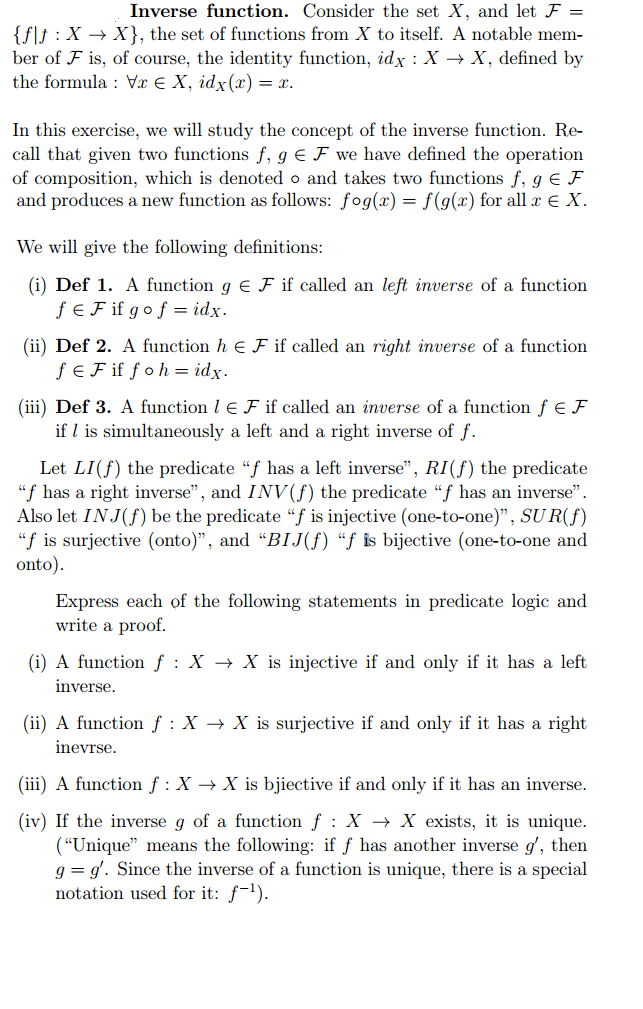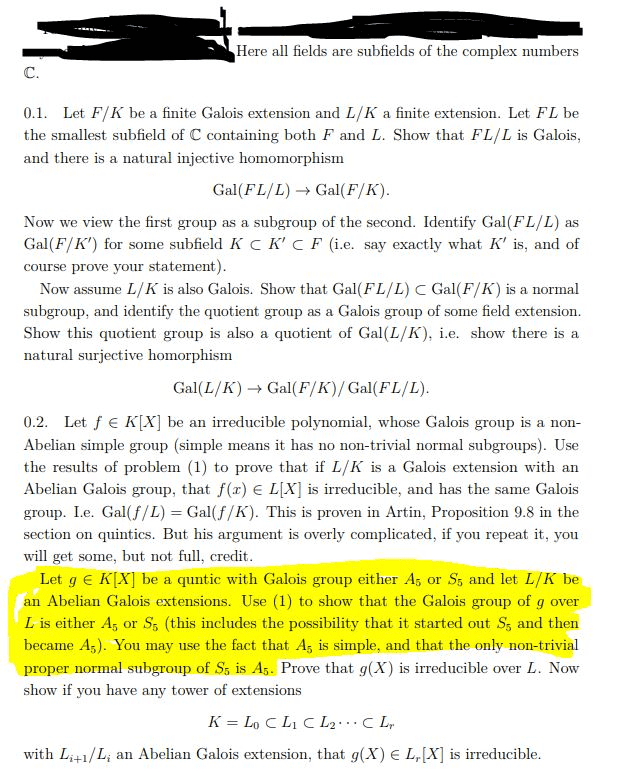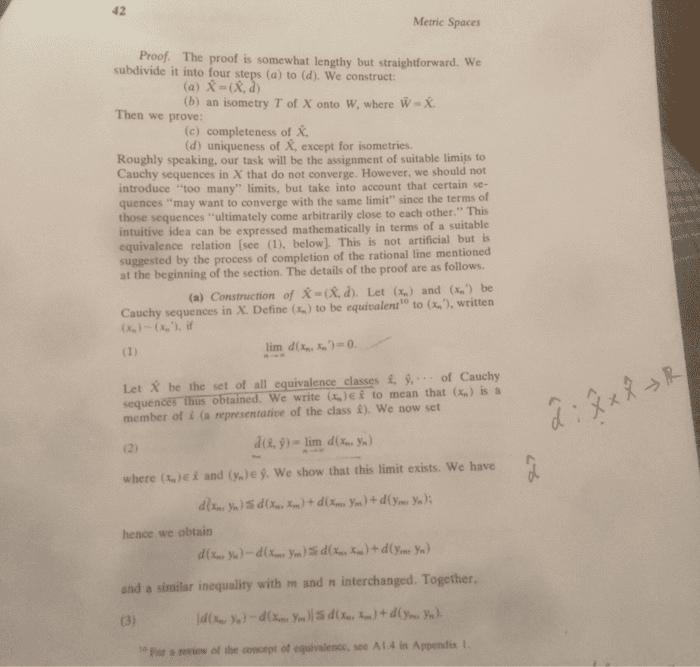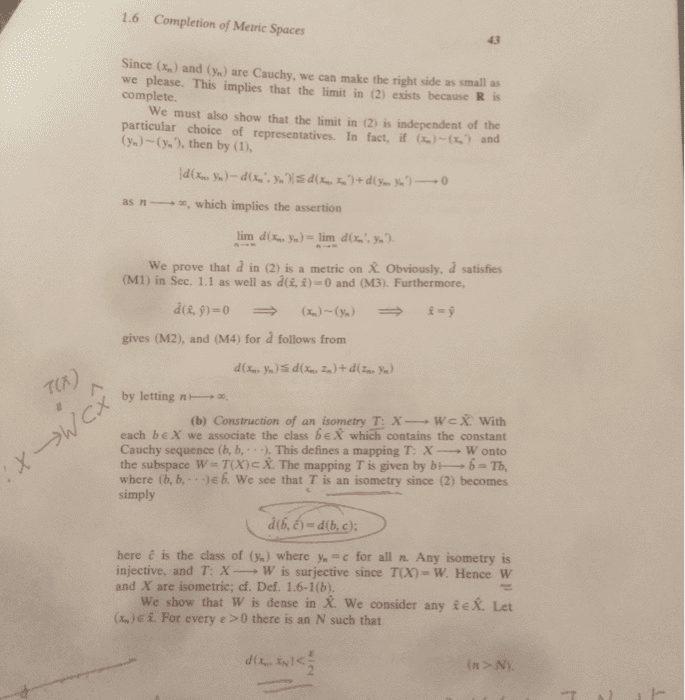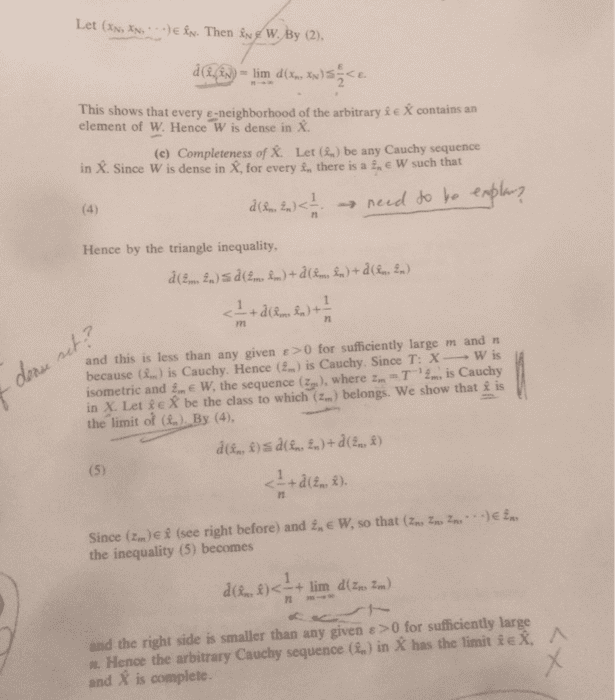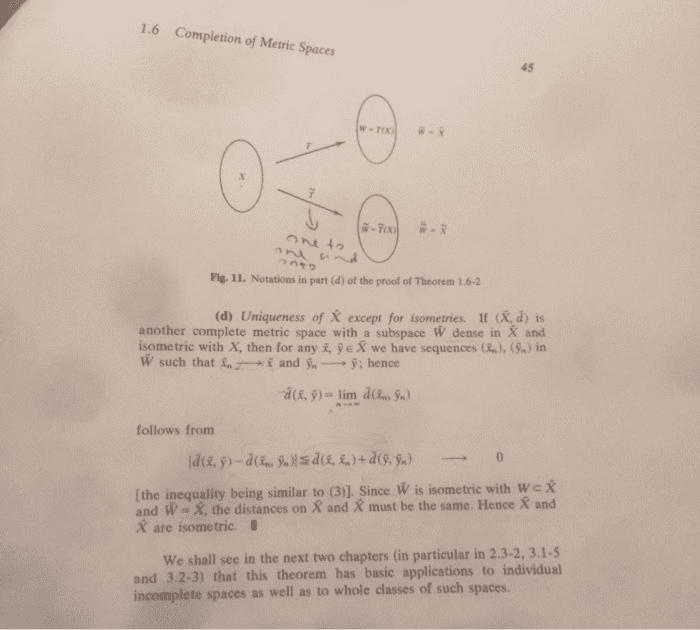Let Ï : G â Gâ² be an isomorphism from the group G to the groupGâ². In particular, Ï is bijective so that its inverse Ïâ1 : Gâ² â Gexists (see 1.9.1). Prove that Ïâ1 is anisomorphism.
1.9.1 Theorem. A function f : X â Y has an inverse if and only ifit is bijective.
Proof. Letf:XâY beafunction.
(â) Assume that f has an inverse fâ1. (f injective?) Letx,xâ² â X and assume that f(x) = f(xâ²). Then x =fâ1(f(x)) = fâ1(f(xâ²)) = xâ².
Therefore, f is injective. (f surjective?) Let y â Y . Put x =fâ1(y). Then x â X and
f(x) = f(fâ1(y)) = y.
Therefore, f is surjective. Since f is both injective andsurjective, it is
bijective.
(â) Assume that f is bijective. Define fâ1 : Y â X byletting fâ1(y) be the unique x in X for which f(x) = y.(Since f is surjective, there is at least one such x and since f isinjective, there is at most one such x.) For x â X, we havefâ1(f(x)) = x (since fâ1(f(x)) is defined tobe the element that f sends to f(x)). Similarly, for y â Y ,f(fâ1(y)) = y (since fâ1(y) is defined to be the elementthat f sends to y). Therefore, fâ1 is an inverse off.
Let Ï : G â Gâ² be an isomorphism from the group G to the groupGâ². In particular, Ï is bijective so that its inverse Ïâ1 : Gâ² â Gexists (see 1.9.1). Prove that Ïâ1 is anisomorphism.
1.9.1 Theorem. A function f : X â Y has an inverse if and only ifit is bijective.
Proof. Letf:XâY beafunction.
(â) Assume that f has an inverse fâ1. (f injective?) Letx,xâ² â X and assume that f(x) = f(xâ²). Then x =fâ1(f(x)) = fâ1(f(xâ²)) = xâ².
Therefore, f is injective. (f surjective?) Let y â Y . Put x =fâ1(y). Then x â X and
f(x) = f(fâ1(y)) = y.
Therefore, f is surjective. Since f is both injective andsurjective, it is
bijective.
(â) Assume that f is bijective. Define fâ1 : Y â X byletting fâ1(y) be the unique x in X for which f(x) = y.(Since f is surjective, there is at least one such x and since f isinjective, there is at most one such x.) For x â X, we havefâ1(f(x)) = x (since fâ1(f(x)) is defined tobe the element that f sends to f(x)). Similarly, for y â Y ,f(fâ1(y)) = y (since fâ1(y) is defined to be the elementthat f sends to y). Therefore, fâ1 is an inverse off.
For unlimited access to Homework Help, a Homework+ subscription is required.
